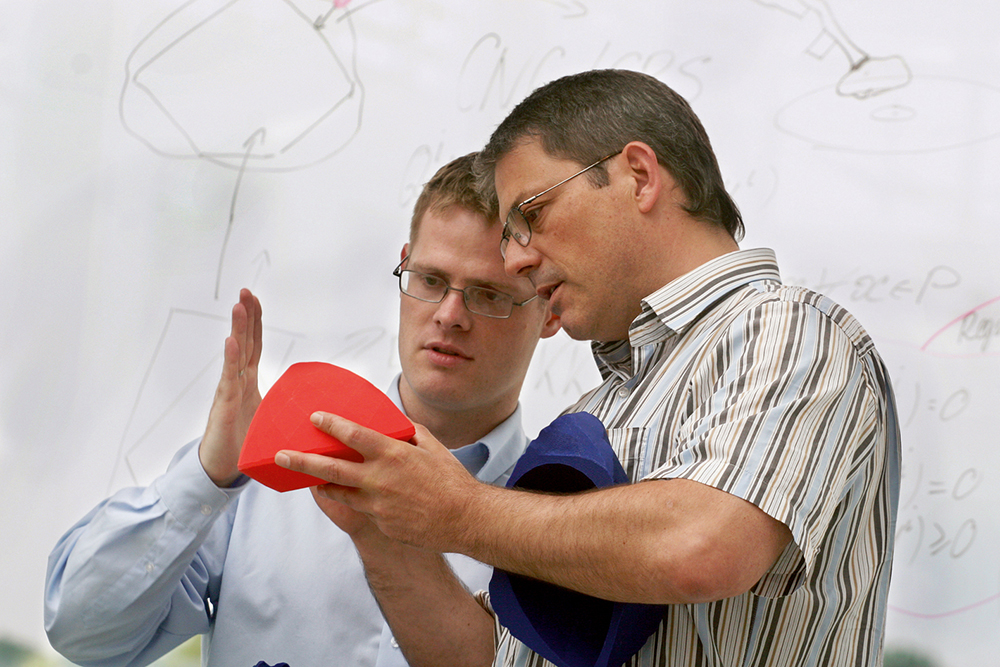Mediaservice
Joseph von Fraunhofer prize for ITWM-scientists
For the third time since the admission to the Fraunhofer Society in 2001, scientists from the Institute for Technological and Economic Mathematics received one of the Joseph von Fraunhofer Awards. They are awarded annually for outstanding scientific achievements, which help to solve application-related problems and are endowed with 20,000 euros each. The prize will be awarded to Dr. Anton Winterfeld and his colleague Dr. Peter Klein from the Department of Optimization; They have developed a software for the optimal utilization of colored gemstones.
Emeralds, rubies and the likes are referred to as colored gemstones by experts. They sparkle and shine with varying intensity, depending on the cut. A new machine can achieve the best possible cut and extract up to 30 per cent more precious stone from the raw material.
»We were astounded when our customer, Markus Wild, approached us and we were not at all certain whether mathematics could offer a solution for the very complex problem of volume optimization of gemstones,« says Dr. Anton Winterfeld from the Fraunhofer Institute for Industrial Mathematics ITWM. Jointly with his colleague Dr. Peter Klein, he will receive one of the 2009 Joseph von Fraunhofer prizes for the development of GemOpt, a new industrial process for the volume-optimized utilization of colored gemstones.
In contrast to diamonds, there are innumerable combinations of types and proportions of cut, and types of facet patterns for colored gemstones. When chosen correctly, the interplay of these variables ensures the luster in the stone, its shine. Sometimes just a few facets are sufficient to make a gemstone sparkle, sometimes several hundred. The task was to set limits on what seemed to be infinite and to calculate the optimal volume. The mathematical approach, which finally resulted in a solution, originated from the area of general semi-infinite optimization. This involved a new type of algorithm, which had until now only been theoretically defined. The team at the ITWM continued to develop this approach and implemented it for this specific problem. The result is an outstanding achievement, also in scientific terms. The second essential part of GemOpt is process control, which Dr. Peter Klein has worked out. For this he ascertained precisely how raw gemstones behave when processed and transferred his findings to the control unit of the machine.
The machine runs fully automatically. First of all, the raw stone is measured. On the basis of these data, the computer calculates optimal embedments, proportions and facet patterns for different basic geometries. The customer then opts for one of the proposed solutions and the machine begins cutting. The process control unit is finely balanced, so that the machine does not split the stones as it cuts them. The system then moves seamlessly on to the polishing step. The 17 axes ensure that the stone can move along any desired path. The machine cuts the facets to ten micrometers exactly – the stones are therefore perfectly geometric. A further advantage is that the machine can produce identical stones – ideal for necklaces. Cutting with the machine can result in up to 30 per cent more weight. This puts a significantly higher price on the stone.
Optimal utilization of gemstones (only available in German)
